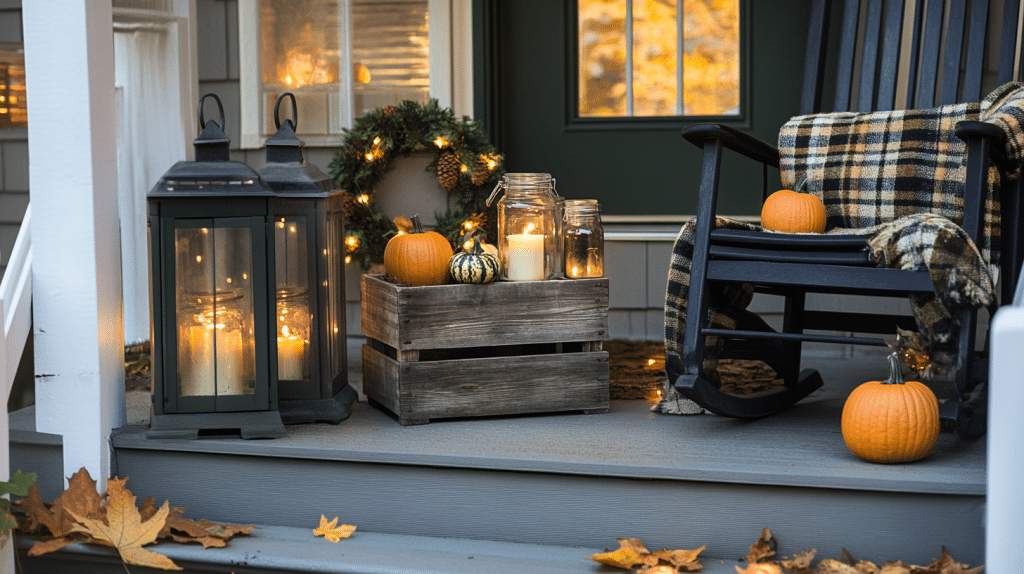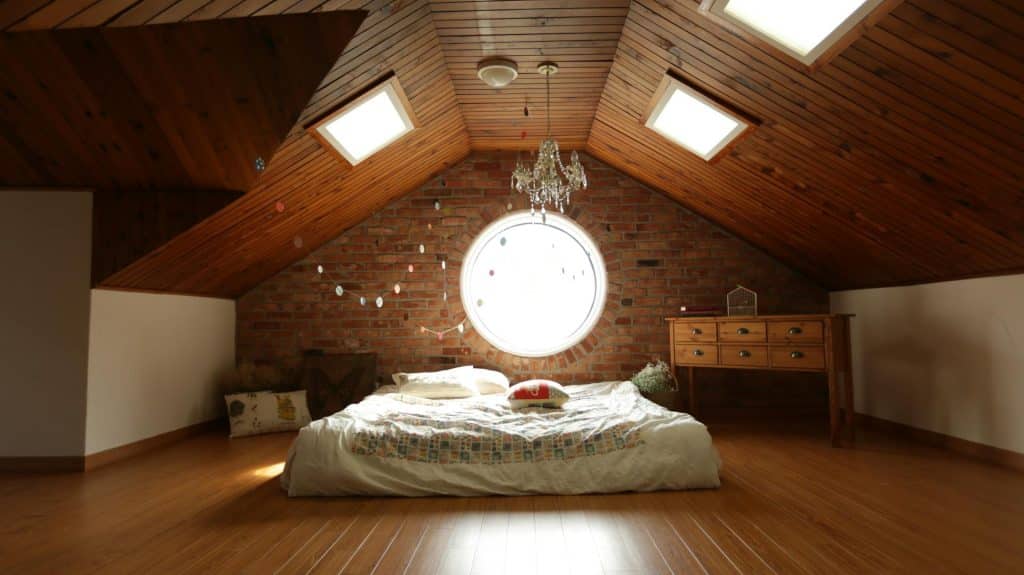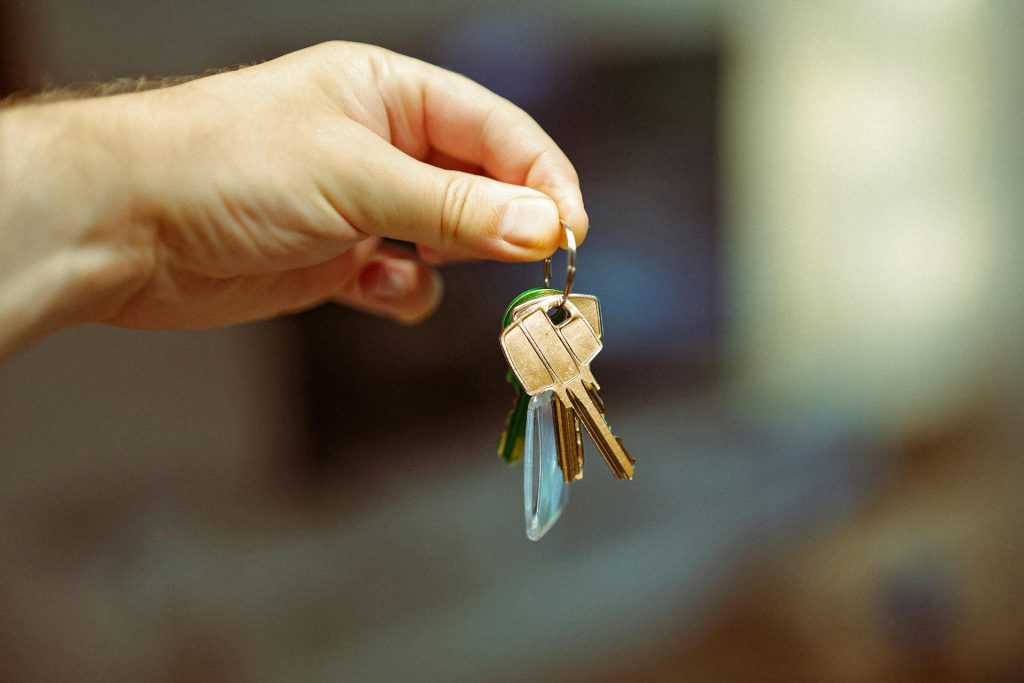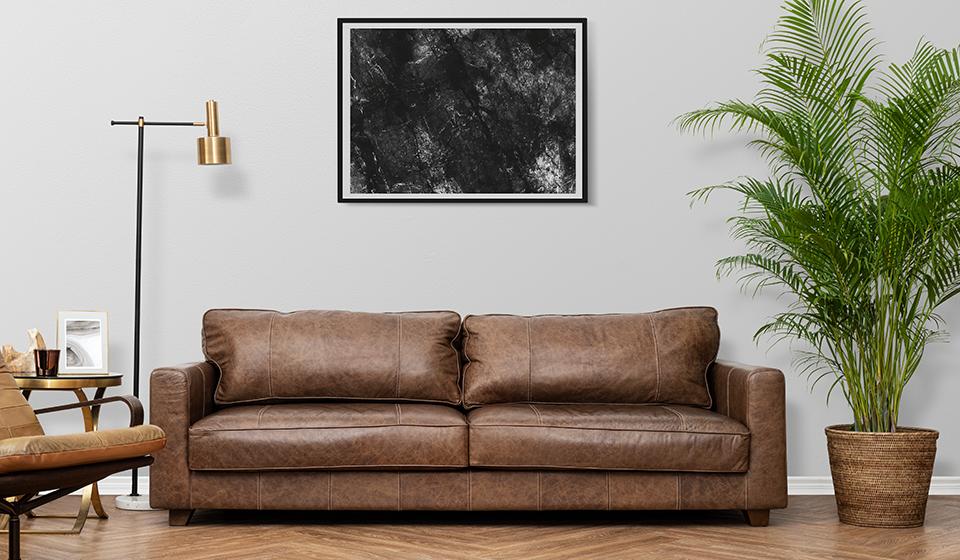I’ve been there, standing in my living room, staring at walls that have lost their luster over the years.
It’s a question we all face eventually: when is it time to repaint? After renovating multiple homes and consulting with professional painters, I’ve gathered some practical insights about interior repainting timelines.
The truth is, there’s no one-size-fits-all answer. Your kitchen might need attention every 3-5 years, while your bedroom walls could look fresh for a decade.
It depends on your lifestyle, the quality of your previous paint job, and even which room we’re talking about.
In this guide, I’ll share what I’ve learned about repainting schedules that balance keeping your home looking fresh without unnecessary work or expense.
How Often Should You Repaint Your House Interior: A Room-by-Room Timeline
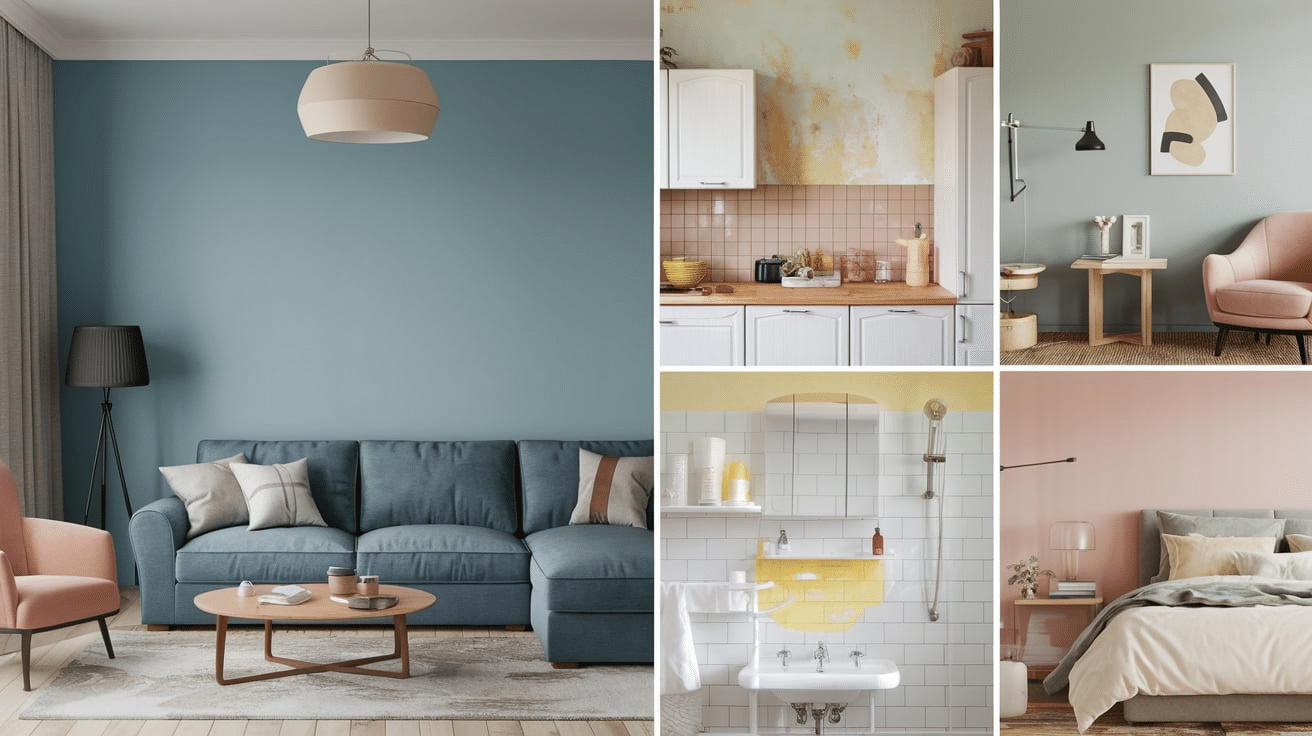
Repainting the interior of my home is key to keeping it fresh and vibrant. Over time, walls accumulate stains, fading, and scuffs.
Here’s a breakdown of how often I should repaint each area, considering factors like usage, exposure to light, and traffic.
Living Room
The living room gets moderate foot traffic and exposure to sunlight, which can cause fading. I repaint it every 5 to 7 years, and I touch up scuff marks as needed.
| Attribute | Information |
|---|---|
| Recommended Repaint Frequency | Every 5 to 7 years |
| Reasons to Repaint | Fading from sunlight, scuff marks |
| Tips for Maintenance | Touch up scuff marks regularly, use light colors to hide wear |
Dining Room
Since the dining room isn’t used every day, it requires less frequent painting. I usually repaint every 5 to 7 years, but I’ll touch up stains or marks after meals or gatherings.
| Attribute | Information |
|---|---|
| Recommended Repaint Frequency | Every 5 to 7 years |
| Reasons to Repaint | Food stains, scuff marks |
| Tips for Maintenance | Use washable paint finishes to minimize stains, touch up spots after large events |
Bedroom
The bedroom doesn’t get as much use, so it can go 5 to 7 years without repainting. However, I might refresh the room if I change the color scheme or notice fading due to sunlight.
| Attribute | Information |
|---|---|
| Recommended Repaint Frequency | Every 5 to 7 years |
| Reasons to Repaint | Fading from sunlight |
| Tips for Maintenance | Choose muted colors to minimize fading, consider new colors when changing decor |
Kitchen
The kitchen is subject to grease, steam, and moisture, so I repaint every 3 to 5 years. Areas near the stove or sink tend to need touch-ups more often due to stains and moisture.
| Attribute | Information |
|---|---|
| Recommended Repaint Frequency | Every 3 to 5 years |
| Reasons to Repaint | Grease stains, moisture, heat |
| Tips for Maintenance | Use kitchen-specific paint, focus on areas near stove and sink for frequent touch-ups |
Bathroom
High humidity in the bathroom can cause paint to peel. I repaint every 3 to 5 years to prevent mold and maintain a fresh look. Mildew-resistant paint helps with durability.
| Attribute | Information |
|---|---|
| Recommended Repaint Frequency | Every 3 to 5 years |
| Reasons to Repaint | Humidity, water stains, mold |
| Tips for Maintenance | Use mildew-resistant paint, repaint areas with high moisture exposure more often |
Hallway
Hallways experience heavy foot traffic. I repaint them every 3 to 5 years, as they tend to get scuffed or dirty more often than other rooms.
| Attribute | Information |
|---|---|
| Recommended Repaint Frequency | Every 3 to 5 years |
| Reasons to Repaint | Dirt, scuff marks, foot traffic |
| Tips for Maintenance | Use durable, washable paint finishes, clean scuffs as soon as possible to avoid repainting too often |
Mudroom
Mudrooms take a lot of abuse from dirt and moisture. I repaint them every 3 to 5 years to keep them clean and durable.
| Attribute | Information |
|---|---|
| Recommended Repaint Frequency | Every 3 to 5 years |
| Reasons to Repaint | Dirt, moisture, foot traffic |
| Tips for Maintenance | Use durable, washable paint, clean frequently to avoid deep stains |
Laundry Room
The laundry room experiences moisture and detergent splashes. I repaint every 4 to 6 years, especially if I notice peeling or stains.
| Attribute | Information |
|---|---|
| Recommended Repaint Frequency | Every 4 to 6 years |
| Reasons to Repaint | Moisture, detergent stains |
| Tips for Maintenance | Use moisture-resistant paint, clean walls to prevent detergent buildup |
By following this guide, I can keep my home’s interior looking vibrant and well-maintained.
Regular touch-ups and periodic repaints ensure that each room looks its best.
With a clear timeline for each space, I can focus on the areas that need attention and maintain a beautiful home year after year.
What Factors Influence Interior Repainting Frequency?
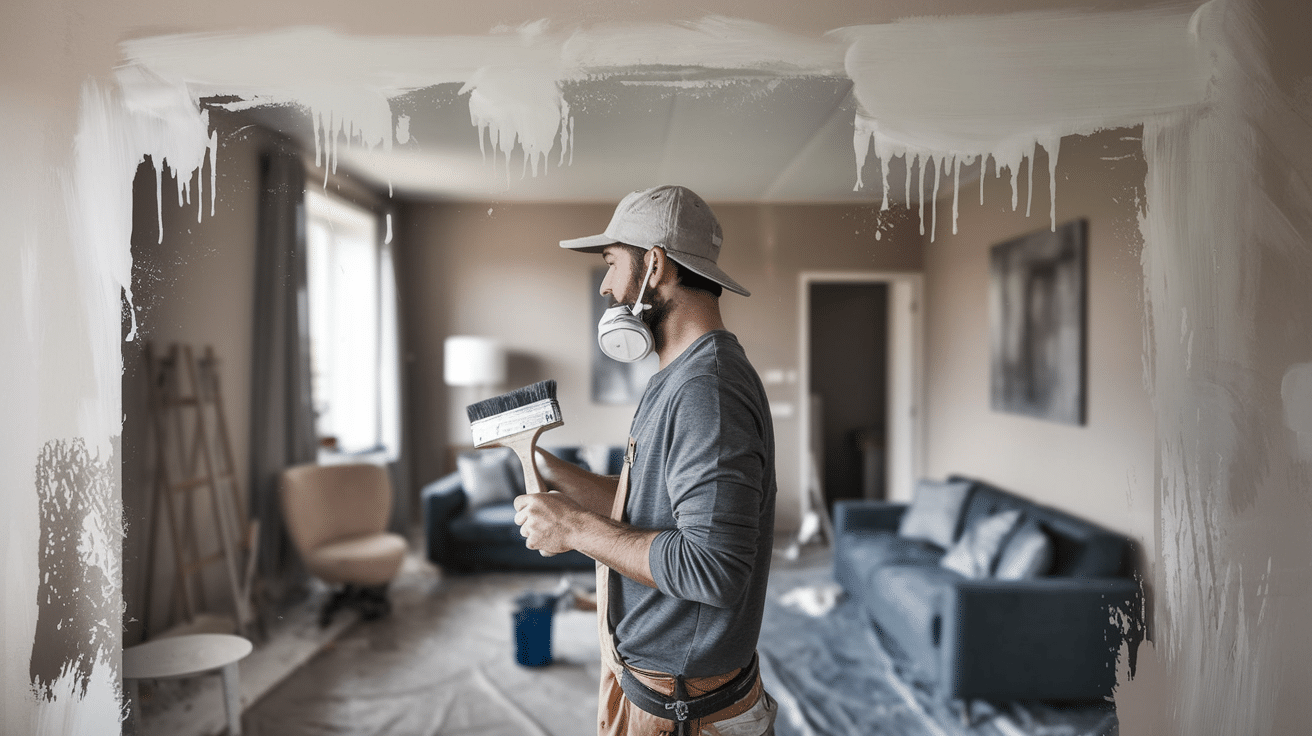
Repainting the interior of my home depends on various factors. By understanding these, I can better plan when it’s time to repaint and ensure my home stays fresh and well-maintained.
- Room Usage and High-Traffic Areas: Like living rooms and hallways, need more frequent repaints due to wear and tear. The more a room is used, the sooner it will show signs of fading, dirt, and scuffs.
- Exposure to Sunlight: Rooms that receive a lot of direct sunlight tend to fade faster. Sunlight breaks down paint pigments, leading to discoloration. Rooms with windows that face the sun may need repainting more often to keep the color vibrant.
- Moisture and Humidity Levels: Bathrooms and kitchens, which experience high humidity, require more frequent repainting. Moisture can cause paint to peel or mildew to form, so using moisture-resistant paint can extend the life of the paint in these areas.
- Paint Quality and Type: High-quality paints last longer and resist fading, stains, and damage better. Using the right type of paint for specific areas, such as mildew-resistant paint for bathrooms, can also affect how often I need to repaint.
- Surface Condition: Walls that show signs of cracking, peeling, or staining will need repainting sooner. Regularly checking the condition of the walls and repairing damage before repainting helps extend the life of the paint.
- Color Choices: Lighter colors may show dirt, stains, and fading more quickly, requiring more frequent touch-ups. Darker colors, while they may not fade as quickly, can show smudges and scuffs more easily, which may require more frequent repainting.
- Environmental Factors: Climate and location affect how quickly paint deteriorates. Homes in humid climates or those exposed to extreme weather conditions may need repainting more frequently. Salt air near the coast can also speed up the paint’s wear.
By considering these factors, I can determine when it’s time to repaint and ensure my home remains beautiful and well-protected.
How to Know When It’s Time to Repaint Your Home
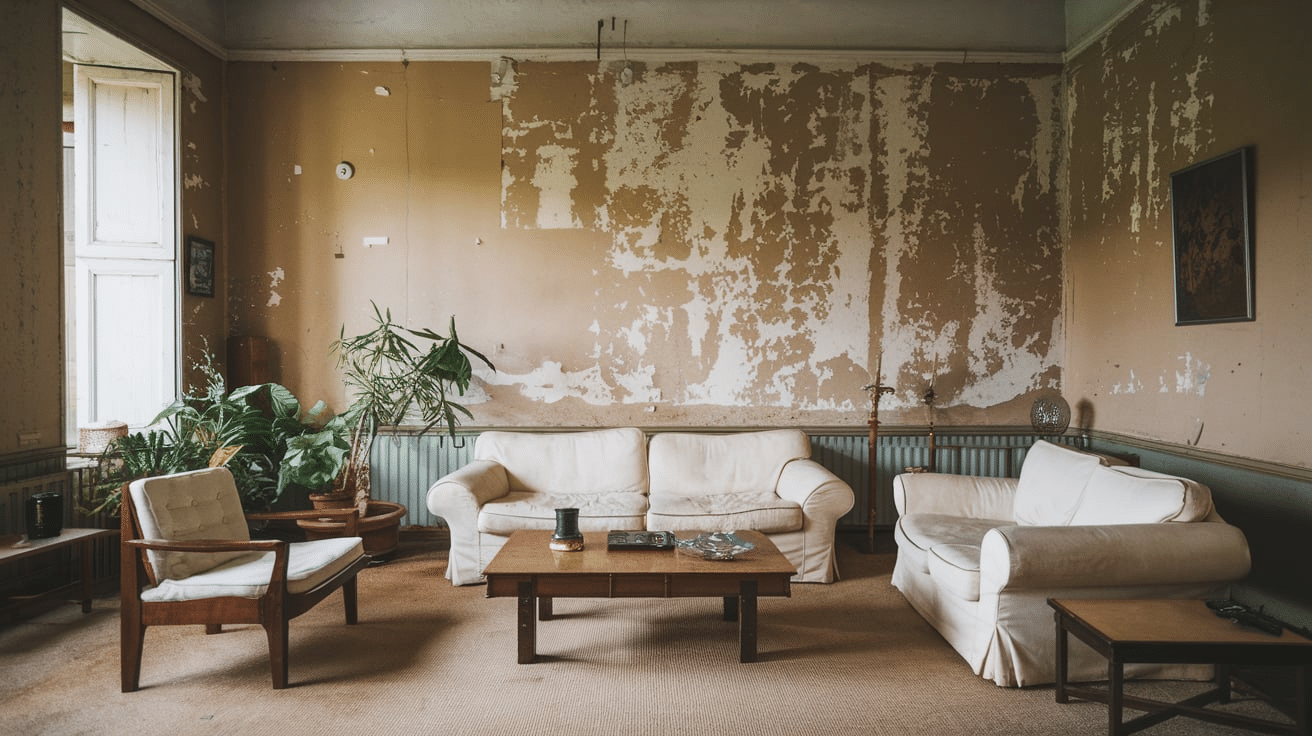
Knowing when to repaint my home is key to maintaining its appearance. Here are the signs that indicate it’s time to repaint:
Fading or Discoloration
When your walls start looking dull or washed-out, it’s time for new paint.
This happens gradually over time, especially in rooms with lots of sunlight. South and west-facing rooms typically show fading first.
Quality paints can resist fading longer, but even the best finishes will eventually lose their vibrancy after years of sun exposure.
Peeling, Cracking, or Bubbling Paint
Peeling or cracking paint is a clear sign you need to repaint.
This usually happens when moisture gets trapped under the paint surface or when the previous paint job didn’t adhere properly.
Before repainting, fix any water leaks or moisture problems. Otherwise, your new paint job will likely develop the same issues within a short time.
Stains and Dirt Buildup
If you can’t remove marks or stains with regular cleaning, your walls need refreshing.
Over time, walls collect fingerprints, food splatter, and other marks that eventually become permanent.
A new coat of paint instantly eliminates these stubborn stains. Consider using paint with a higher sheen level in areas prone to dirt, as these finishes are easier to clean.
Mold or Mildew Growth
Mold or mildew growing on your walls indicates it’s time for new paint.
These issues often appear in bathrooms, kitchens, or basements where humidity levels are higher.
Before repainting, address any moisture issues and thoroughly clean the affected areas.
Then use mold-resistant paint specifically designed for high-moisture environments to prevent future problems.
Blistering or Flaking
When paint forms bubbles or flakes off in patches, you definitely need to repaint.
This typically happens because of poor preparation before the previous paint job or due to moisture issues.
Ensure the surface is properly cleaned, sanded, and primed before applying new paint to avoid a repeat of the problem.
Touching Up No Longer Works
When small touch-ups become obvious and don’t blend with the surrounding wall, it’s time for a complete repaint.
Even with the original paint can, the existing paint on your walls has likely changed color due to aging, cleaning, and sun exposure.
A full repaint ensures uniform color and finish throughout the room.
Increased Wear in High-Traffic Areas
Areas with lots of activity like hallways, entryways, and children’s rooms will show wear faster than other spaces.
If you notice scuff marks, hand prints, or general wear in these high-traffic zones, it’s probably time to repaint.
Consider using more durable, washable paint formulas in these areas for better longevity.
New Home or Major Renovations
A new home or newly renovated space deserves fresh paint.
New paint helps cover any minor construction damage to walls and allows you to personalize your space with colors that match your style and furniture.
It’s much easier to paint before moving all your furniture in or after construction is complete.
When You’re Ready for a Change
Sometimes you just want a change. If you’re tired of your current wall color or want to update a room’s entire feel, new paint is the easiest and most cost-effective option.
A different color can dramatically change a room’s mood and make your space feel fresh and updated without replacing furniture or fixtures.
When Is the Best Time to Repaint Your Home’s Interior?
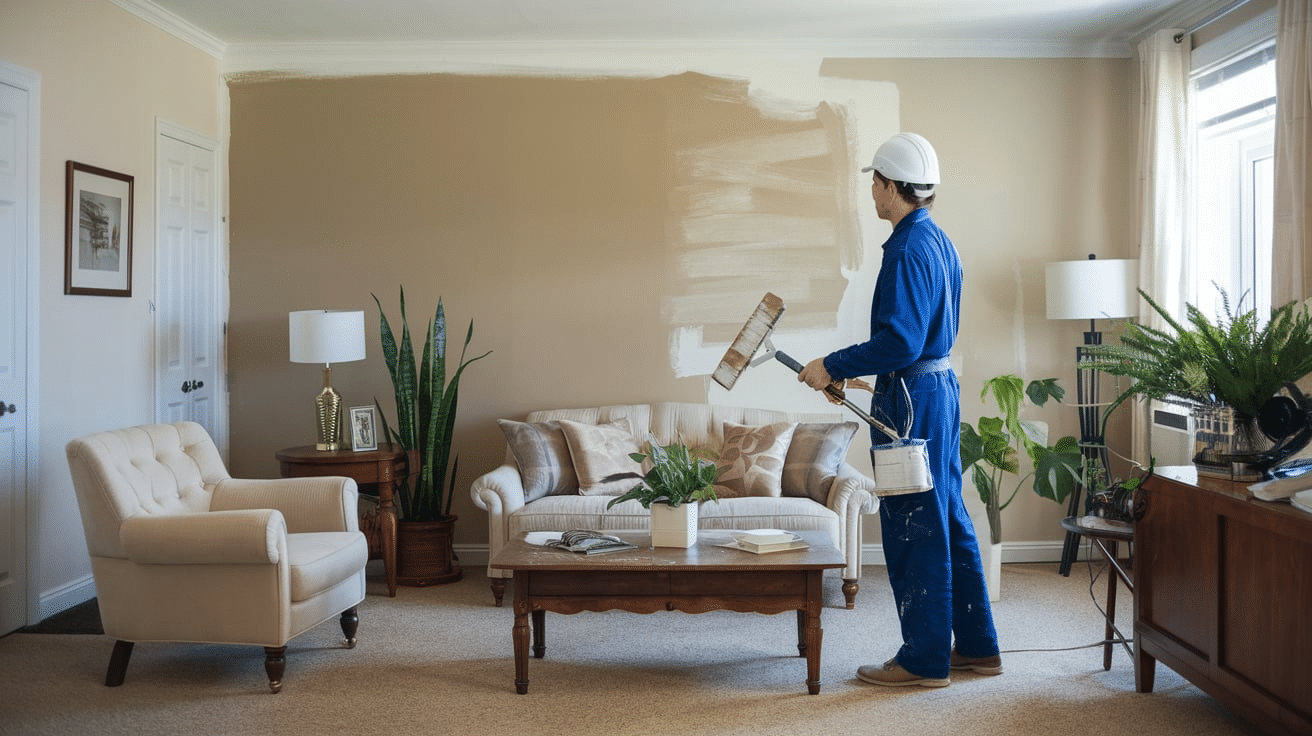
Certain factors, such as weather, temperature, and personal schedule, can make a big difference in how well the paint adheres and dries.
Here’s when I should consider repainting my home’s interior for the best results:
During Dry, Mild Weather:
- Dry, mild weather ensures the paint dries evenly and cures properly.
- Late spring or early fall is usually ideal for moderate temperatures and low humidity.
When the Temperature is Between 50°F and 85°F:
- Paint adheres best in temperatures between 50°F (10°C) and 85°F (29°C).
- Extreme temperatures can affect drying time and result in a poor finish.
During Your Home’s Low-Traffic Periods:
- Repainting is easier when the house is less busy, minimizing disruptions.
- Low-traffic times, like school breaks, give the paint time to dry without interference.
When You Have Time to Prepare the Space Properly:
- Sufficient time for preparation, like cleaning and covering furniture, ensures a successful job.
- Rushed preparations can lead to mistakes or messy results.
When You Are Not in a Rush to Finish:
- Take your time to apply multiple thin coats and allow each to dry fully.
- Rushing may cause uneven coats, drips, or streaks in the finished paint.
During the Off-Season for Contractors:
- Contractors may have more availability and offer lower rates during off-peak months.
- Scheduling during the off-season can result in better pricing and availability.
After Home Renovations or Moving In:
- Repainting after renovations or moving in helps refresh the space and cover imperfections.
- Fresh paint can make the home feel complete and cohesive with new furniture or changes.
For the best results, I should aim for mild, dry weather, avoid extreme temperatures or humidity, and pick a time when I can fully dedicate myself to the process.
By considering these factors, I can ensure that the paint job lasts longer, looks better, and is completed with minimal disruption to my daily life.
Benefits of Regularly Repainting Your Interior
Regularly repainting the interior of my home offers both aesthetic and practical benefits that improve my living space, protect my walls, and even increase my home’s value. Here are six key advantages of repainting regularly:
Enhances Aesthetic Appeal: A fresh coat of paint brightens any room, updates the decor, and keeps the home looking clean and stylish.
Increases Home Value: Well-maintained interiors, including freshly painted walls, increase the overall market value of my home, making it more attractive to potential buyers.
Protects and Preserves Walls: Repainting forms a protective barrier, preventing damage from dirt, moisture, and wear, and helps keep walls in good condition.
Prevents Mold and Mildew Growth: Mildew-resistant paint helps prevent mold growth, especially in high-humidity areas like bathrooms and kitchens, protecting both the paint and health.
Improves Indoor Air Quality: Low-VOC paints reduce harmful fumes, improving air quality, and sealing in allergens that accumulate on walls.
Maintains a Clean and Fresh Living Environment: Repainting helps cover stains, scratches, and imperfections, ensuring my home looks clean and inviting, and maintains the appearance of trim and baseboards.
Common Mistakes When Repainting Your Home
Repainting the interior of my home can be a rewarding project, but it’s easy to make mistakes that can lead to subpar results. Avoiding these common mistakes ensures a smoother, more professional-looking finish. Here are eight mistakes I should watch out for when repainting my home:
Skipping Surface Preparation
- Failing to clean and prep the walls properly can lead to poor paint adhesion.
- Dirt, grease, and dust on the walls can prevent the paint from bonding well.
- Always clean the surface, sand rough spots, and apply primer if needed for a smoother finish.
Using Low-Quality Paint
- Low-quality paint may save money upfront but will lead to faster fading, chipping, and peeling.
- Investing in high-quality paint ensures better coverage, durability, and a longer-lasting finish.
- High-quality paints are easier to clean and maintain.
Not Using Primer
- Skipping primer, especially when changing wall colors or covering stains, can result in uneven color and a patchy finish.
- Primer helps the paint adhere better and creates a smooth, even surface.
- Always use primer when needed, particularly when painting over dark colors or surfaces with stains.
Painting in Poor Conditions
- Painting in extreme temperatures or high humidity can negatively affect the drying and curing process.
- The ideal temperature for painting is between 50°F (10°C) and 85°F (29°C), with low humidity.
- Check the weather conditions before painting to avoid poor results.
Applying Paint Too Thick
- Applying thick coats of paint can lead to drips, streaks, and uneven texture.
- Multiple thin coats are more effective than one thick coat, providing a smoother finish.
- Allow each coat to dry fully before applying the next one.
Not Using the Right Tools
- Using the wrong type of brush or roller can result in an uneven finish and make the job more difficult.
- Invest in good-quality brushes and rollers that suit the type of paint and surface you’re working on.
- A high-quality brush will give you a smoother, more professional finish.
Neglecting Edges and Trim
- Focusing only on the walls and neglecting the trim and edges can leave the space looking unfinished.
- Carefully tape off edges and use a smaller brush to paint corners, edges, and trim for a clean finish.
- Taking the time to paint the trim properly adds a polished look to the room.
Rushing the Drying Time
- Rushing through the drying time between coats can result in smudging, peeling, or streaks.
- Allow enough time for each layer to dry fully before applying the next coat.
- Follow the recommended drying time for the best results and finish.
With careful preparation, the right tools, and patience, I can achieve beautiful results that make my home look refreshed and well-maintained.
Summing Up
When it comes down to it, repainting your home’s interior is both an investment in its value and your everyday happiness.
I’ve found that staying ahead of the game and repainting before walls show serious wear, saves me both time and money in the long run.
Remember, different rooms have different needs. Your kitchen might need attention every few years, while bedrooms can often go longer. Trust your eyes when colors fade or walls start looking dingy, it’s probably time.
Don’t rush the process. Proper preparation and quality materials make all the difference between a paint job that lasts three years and one that looks great for eight.
In the end, your home should reflect who you are today, not who you were years ago. Happy painting!




